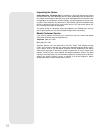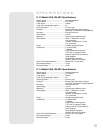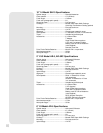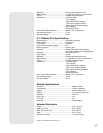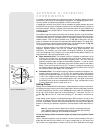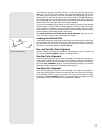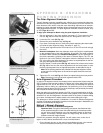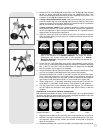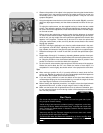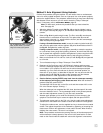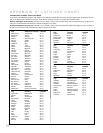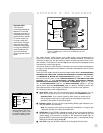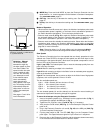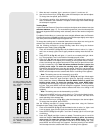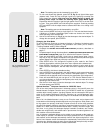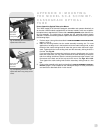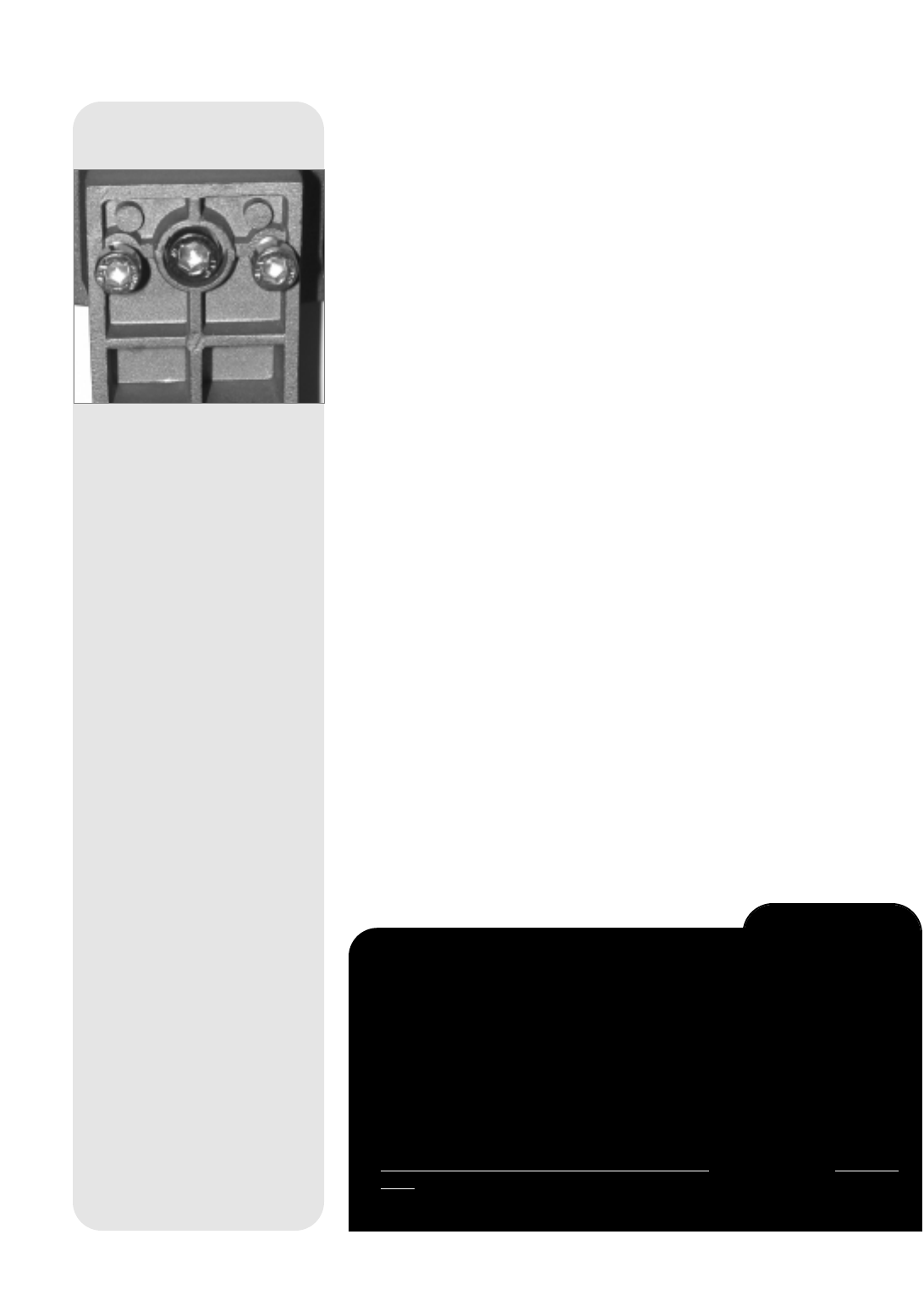
52
4. Observe the position of the object in the eyepiece. Assuming that the declination
was properly set in the previous procedure, the object should have moved only
horizontally (that is, side-to-side) from its original position. It may be out of the
eyepiece altogether.
5. Using the adjustment mechanism on the bottom of the cradle (Fig. 41), move the
reference object approximately half the distance towards the center of the eye-
piece.
To adjust the cradle screws, use the supplied hex key to loosen the two outside
screws. Then adjust the position of the object by tightening or loosening the cen-
ter screw. Perform this adjustment on both sets of screws. When finished, retight-
en the outer screws.
Before moving the optical tube, note the location that the telescope is centered
on relative to the reference object. Depending on the telescope type and acces-
sories in use, you may need to move the optical tube opposite to the direction that
appears in the eyepiece. The best way to be sure is to move the optical tube
(using the cradle screws) a little, and verify that the correct direction was moved
through the eyepiece.
6. WITHOUT moving the declination axis from its position determined in the previ-
ous alignment, and WITHOUT adjusting the cradle position further, adjust the
legs, latitude, and azimuth of the tripod to center the object in the eyepiece again.
7. Rotate the telescope 180° in the R.A. axis ONLY, to return the optical tube to posi-
tion A.
8. Repeat steps 5 through 8, if necessary, alternating between position A and posi-
tion B, and bringing the reference object halfway of the remaining distance to cen-
ter. Stop the procedure once the distance between the object in position A and
position B is less than one third the width of the eyepiece.
9. As a final check, select another object and place it into the center of the eyepiece.
Rotate the mount about the R.A. axis. Watch the motion of that object. It is
acceptable if it moves slightly, but should remain in the eyepiece the entire time.
Tips
■ When moving to position A or B, it is usually sufficient to merely level the Dec.
axis by eye. Whether in position A or B, the counterweight shaft should appear to
be horizontal when looked at from several feet away.
■ If you are finding it difficult to lower the altitude of the tripod head without the
counterweight banging into the forward tripod leg, increase the length of the two
rear tripod legs to introduce a tilt into the whole mount.
■ Before starting the alignment procedure, it is helpful to have the tripod azimuth
adjustment knobs even, to allow an equal range of travel in either direction.
■ Make sure the focuser lock is tightened once focus is achieved. Otherwise, grav-
ity may cause the focuser to move during rotation of the telescope and introduce
error into the procedure.
LXD55 TIPS
Star Charts
Star charts and planisphere are very useful tools and are great aids in plan-
ning a night of celestial viewing.
A wide variety of star charts are available in books, in magazines, on the inter-
net and on CD Roms. Meade offers AstroFinder
™
and other star locator soft-
ware. Contact your Meade dealer or Meade's Customer Service department
for more information.
Astronomy and Sky and Telescope magazines print star charts each month
for up-to-the-minute maps of the heavens.
The Norton Star
Atlas and Reference Handbook by A. Norton and Sky Atlas
2000 by W. Tirion and R. Sinnot are two of the most popular star charts on the
market.
Fig. 41: Cradle adjustment screws.



